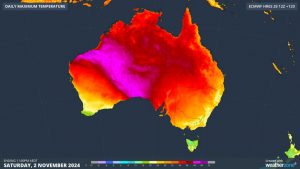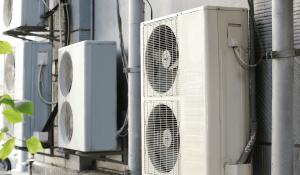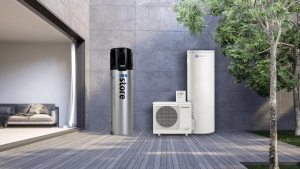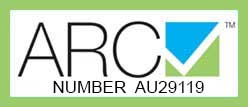Introduction to Ducted Air Conditioning
Ducted air conditioning is a popular choice for homeowners seeking year-round climate control with the convenience of one system that both heats and cools. Unlike split systems that only service individual rooms, ducted air conditioning provides even temperature distribution across the entire home, making it perfect for larger spaces and open-plan designs. The system is discreet, with only the vents visible, ensuring it doesn’t intrude on the home’s interior aesthetics.
Whether you’re upgrading an old system or installing air conditioning for the first time, ducted air conditioning offers significant benefits in energy efficiency, comfort, and ease of use.
This guide will walk you through everything you need to know about selecting, installing, and maintaining the best ducted air conditioning system for your home.
How Ducted Air Conditioning Works
Ducted air conditioning systems use heat pump technology to both heat and cool your home efficiently. This process involves extracting heat from the outside air and either warming or cooling it before distributing it via ducts to multiple rooms.
In the cooler months, the system pulls heat from the outside air, transfers it into the refrigerant, and moves it through the ducts into your home. In summer, the process reverses. Warm indoor air is drawn out, cooled, and sent back into the house to lower the temperature. This dual function makes ducted air conditioning systems a cost-effective, space-saving option.
One key advantage of ducted air conditioning is its ability to provide even air distribution across your home. This ensures that every room, even the farthest from the system’s central unit, maintains a comfortable temperature. By circulating air through a network of ducts, the system can quickly and efficiently cool or heat larger areas, making it ideal for open-plan living spaces.
Choosing the Right Ducted Air Conditioning System for Your Home
Choosing the right ducted air conditioning system starts with understanding the size and capacity your home needs. The system’s capacity is measured in kilowatts (kW) and must be appropriately matched to your home’s size and design for optimal performance. If the system is too small, it will struggle to heat or cool your home, leading to inefficiency and higher energy costs. On the other hand, a system that is too large will cycle on and off frequently, causing unnecessary wear and tear.
Room size matters significantly when selecting a ducted air conditioning system. Suppliers or installers will typically assess the square footage of the area to be conditioned and recommend a system that matches those dimensions. For instance:
- Rooms up to 20 m² usually require a 2-2.5 kW system.
- Larger spaces, like those between 60-80 m², may need a 5-7 kW system to maintain a comfortable climate.
In addition to room size, other factors like ceiling height, insulation levels, and the number of windows play a role in determining the correct system size.
Cost Considerations for Ducted Air Conditioning
The cost of installing a ducted air conditioning system can vary widely depending on several factors, including the size of the system, the complexity of the installation, and your home’s specific needs. On average, installing a ducted air conditioning system for a modest-sized home can range from $9,000 to $15,000, but larger homes or more complex installations may exceed this.
Installation costs are influenced by:
- The number of zones you want to control.
- The difficulty of running ducts through your home.
- Whether modifications to ceilings or walls are required.
In addition to upfront costs, ongoing running costs are crucial to consider. A key advantage of ducted systems is their energy efficiency, especially those with high energy star ratings. However, the actual running cost depends heavily on:
- How frequently you use the system.
- The size of the areas being heated or cooled.
- Your climate and how extreme the weather conditions are in your area.
For example, homes in hotter regions will likely incur higher running costs during summer, while those in colder climates may face higher costs in winter.
Victorian Energy Upgrades (VEU) Program: Reducing Installation Costs
If you’re in Victoria, Australia, the Victorian Energy Upgrades (VEU) program can help reduce the upfront cost of installing a ducted air conditioning system. The program offers financial incentives to upgrade to more energy-efficient appliances, including ducted air conditioners. Rebates typically range from $300 to over $1,500 depending on the system’s size and efficiency.
However, if you are replacing an old, inefficient air conditioning unit, you may qualify for even higher rebates, ranging from $1,000 to $2,500 or more. This is because upgrading from an older system results in greater energy savings, which is a key factor in determining the rebate amount.
To check your eligibility, visit the VEU website or consult your air conditioning supplier, who can guide you through the application process. Taking advantage of these rebates can make ducted air conditioning more affordable by significantly reducing the installation costs, particularly when upgrading from an outdated system.
Energy Efficiency and Ducted Air Conditioning
One of the most compelling reasons to invest in ducted air conditioning is the potential to lower your energy bills while maintaining a comfortable home environment. Modern ducted systems are designed to be highly energy efficient, especially when compared to older heating and cooling methods such as gas or electric heaters. Many of today’s systems can deliver up to 6 units of heat or cooling for every 1 unit of electricity consumed, making them far more efficient than standard electric heaters.
When choosing a ducted air conditioner, pay attention to the Energy Star Rating. This rating provides a quick way to gauge the system’s efficiency. Models with a higher star rating use less energy, reducing both your environmental footprint and your utility bills.
Additional features can further improve efficiency, including:
- Timers and programmable thermostats: Allow you to set specific times for the system to turn on or off, ensuring it only runs when needed.
- Sensors: Some systems come with movement sensors that automatically adjust the output based on whether a room is occupied. Controllers such as the AirTouch is also available.
Key Factors to Consider Before Purchasing
Before purchasing a ducted air conditioning system, it’s essential to evaluate the long-term value, which balances affordability with energy savings. While the upfront cost may be higher than a single-room solution like a split system, ducted air conditioning can be more cost-effective in larger homes. The long-term savings in energy consumption can outweigh the initial expense, particularly if the system is used frequently and efficiently.
Comparing ducted air conditioning to other air conditioning options is important:
- Ducted vs. Split Systems: While split systems are cheaper to install, they only cool individual rooms, which may not be practical for larger homes. Ducted systems, in contrast, can heat or cool an entire home efficiently.
- Portable vs. Fixed Air Conditioning Units: Portable air conditioners offer flexibility but are less efficient and effective than a ducted system in terms of cooling large areas or multiple rooms.
Additionally, climate considerations play a big role in the decision-making process. For instance, homes in hot and humid areas will benefit from a system with stronger cooling capabilities, while homes in cooler regions will need a unit with reliable heating power. Your location also impacts running costs, as more extreme climates typically require more frequent use of the air conditioner.
Maintenance and Longevity of Ducted Air Conditioning
Proper maintenance is crucial for ensuring your ducted air conditioning system runs efficiently and lasts for many years. Regular upkeep not only helps the system perform optimally but also prevents potential breakdowns, saving you from costly repairs.
Key maintenance tasks include:
- Cleaning filters: Dust and debris can accumulate in your air filters, reducing airflow and making the system work harder. Filters should be cleaned every few months or more frequently if the system is used regularly.
- Servicing the system: It’s recommended to schedule professional servicing annually or as per the manufacturer’s guidelines. During a service, the technician will check for any issues, perform any maintenance, and ensure everything is working efficiently.
- Inspecting ductwork: Over time, ducts can develop leaks or blockages, which can reduce the system’s efficiency. Having your ductwork inspected ensures air is flowing properly throughout your home.
Additionally, keeping an eye on common issues like unusual noises, inconsistent temperatures, or higher-than-normal energy bills can help catch problems early. Addressing these promptly will ensure your system lasts longer and performs better.
Reducing the Running Costs of Ducted Air Conditioning
While ducted air conditioning systems are designed to be energy efficient, there are several strategies you can use to further reduce running costs and improve efficiency.
Set the thermostat efficiently:
- In winter, setting your thermostat between 18°C and 20°C is recommended for optimal heating without excessive energy consumption.
- In summer, aim for a setting between 24°C and 26°C. Each degree lower in cooling mode increases running costs by around 10%, so it’s important not to overcool your home.
Avoid heating or cooling empty rooms:
If your system supports zoning, use this feature to cool or heat only the rooms that are in use. Shutting off areas that don’t need air conditioning can significantly cut down on energy use.
Insulate your home:
A well-insulated home retains heat in winter and keeps cool air in during summer. This means your air conditioning system won’t have to work as hard to maintain a comfortable temperature, reducing energy consumption. Sealing gaps around doors and windows, installing curtains, and adding roof insulation are all effective ways to enhance your home’s energy efficiency.
Utilise natural ventilation:
In the cooler months, allow fresh air in during the day to reduce the need for artificial heating. Similarly, during summer, open windows in the evening to let in cooler air, reducing the strain on your ducted air conditioner.
Environmental Impact of Ducted Air Conditioning Systems
Modern ducted air conditioning systems are much more environmentally friendly than older heating and cooling technologies. Reverse-cycle ducted air conditioners, in particular, produce fewer emissions than older gas or electric systems because of their energy-efficient heat pump technology.
In fact, many newer models use eco-friendly refrigerants that have a lower global warming potential (GWP), helping reduce the environmental impact. While all air conditioning systems have some level of carbon footprint due to energy consumption, choosing a system with a high Energy Star Rating ensures that it consumes less electricity, leading to fewer emissions over its lifetime.
For homes looking to further minimise their environmental impact, integrating ducted air conditioning systems with solar panels can be an excellent solution. By using renewable energy to power your system, you can reduce your reliance on grid electricity and lower your household’s carbon emissions.
Installing Ducted Air Conditioning in Different Home Types
When installing ducted air conditioning, it’s important to consider the unique needs of different home types. Single-family homes typically have more space for ducts and are easier to fit with ducted systems, while apartments and high-density residences may face additional challenges.
In apartment complexes, the installation process may require approval from the building’s owner’s corporation. Noise levels also become a concern in urban or densely populated areas. Newer systems are designed to be quieter, but you should always check local environmental regulations about noise limits, especially if outdoor units are close to neighboring properties.
In these settings, it may also be more difficult to install ducts due to space restrictions. However, with expert guidance and careful planning, even compact or complex homes can benefit from ducted air conditioning.
Maximising Comfort with Zoning in Ducted Air Conditioning
One of the biggest advantages of ducted air conditioning is the ability to implement zoning. This feature allows you to divide your home into different zones, each with its own temperature settings. This not only enhances comfort but also significantly improves energy efficiency.
For example, you can:
- Set different temperatures in bedrooms and living areas.
- Turn off air conditioning in unused rooms, reducing unnecessary energy consumption.
- Program specific times for zones to be heated or cooled, so your home is only conditioned when you need it.
Zoning is especially beneficial for families with different temperature preferences or for large homes where not all rooms are occupied at the same time. By focusing on only the areas that need climate control, you can save money and make your home more comfortable.
The Future of Ducted Air Conditioning: Trends and Innovations
The future of ducted air conditioning is evolving with smart technology and innovations that further enhance convenience and efficiency. Many newer systems now integrate with smart home technology, allowing you to control your air conditioning from your smartphone or voice-activated devices like Google Home or Alexa.
These smart ducted systems provide the ability to adjust the temperature remotely, schedule the system to turn on or off, and even monitor energy usage in real-time. This kind of automation ensures that your system operates at its most efficient settings, reducing energy waste.
In addition to automation, advances in eco-friendly refrigerants and green technology continue to make ducted systems more sustainable. The development of refrigerants with lower global warming potential (GWP) and innovations that optimise energy use, such as inverter technology, help reduce the overall environmental footprint of these systems.
Frequently Asked Questions about Ducted Air Conditioning
What size system do I need for my home?
The size of the system you need depends on the size of your home or the area you want to condition. For instance, a system for a 20-40 m² room might require a 2.5-5 kW unit, while a larger 60-80 m² space would need a 5-7 kW unit.
How much does it cost to install ducted air conditioning?
The cost can vary, but typically, installing a ducted air conditioning system for a small to medium-sized home ranges between $5,000 and $10,000. Larger homes or complex installations can exceed this.
What are the long-term savings with ducted air conditioning?
Though the initial installation cost can be high, ducted air conditioning systems are energy-efficient, especially if they are zoned properly. Over time, energy savings from efficient use can offset the higher upfront costs.
How often should I service my system?
It’s recommended to service your ducted air conditioning system annually or according to the manufacturer’s guidelines. Regular maintenance ensures the system runs efficiently and lasts longer.










